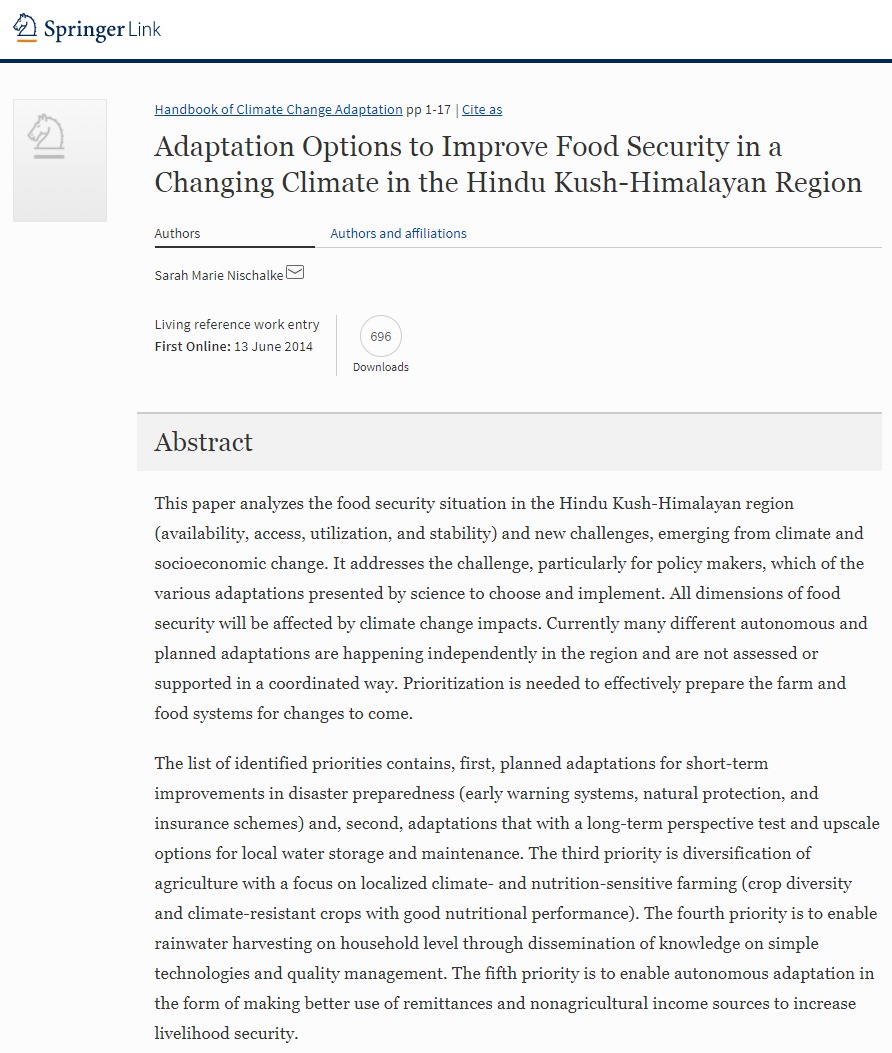
This paper analyzes the food security situation in the Hindu Kush-Himalayan region (availability, access, utilization, and stability) and new challenges, emerging from climate and socioeconomic change. It addresses the challenge, particularly for policy makers, which of the various adaptations presented by science to choose and implement. All dimensions of food security will be affected by climate change impacts. Currently many different autonomous and planned adaptations are happening independently in the region and are not assessed or supported in a coordinated way. Prioritization is needed to effectively prepare the farm and food systems for changes to come. The list of identified priorities contains, first, planned adaptations for short-term improvements in disaster preparedness (early warning systems, natural protection, and insurance schemes) and, second, adaptations that with a long-term perspective test and upscale options for local water storage and maintenance. The third priority is diversification of agriculture with a focus on localized climate- and nutrition-sensitive farming (crop diversity and climate-resistant crops with good nutritional performance). The fourth priority is to enable rainwater harvesting on household level through dissemination of knowledge on simple technologies and quality management. The fifth priority is to enable autonomous adaptation in the form of making better use of remittances and nonagricultural income sources to increase livelihood security